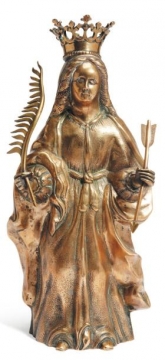End 17th century
Type:
Sculpture
Material / technique:
Cast brass
Dimensions:
32.5 cms high
Type of acquisition:
Acquired by the Pierre-François Tilmon Fund
Year of acquisition:
2011
Depository institution:
Musée Provincial des Arts Anciens du Namurois-Trésor d'Oignies (TreM.a). Namur
